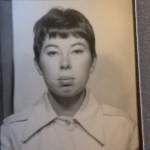OK to turn off A-Flex?
OK to turn off A-Flex?
I started CPAP two weeks ago. The first night, I felt like I was suffocating -- very scary. I called my compliance folks the next day. (Actually, I called them right then, at 2:00 in the morning, but the call-back was from an oxygen specialist who said the compliance people only worked M-F, 9-5.)
I told the compliance guy that it felt like the CPAP was breathing in a different rhythm from me, and, when the machine and I got out of sync, I couldn't breathe in -- there was no air there. He told me this didn't make sense -- that the 'C' in "CPAP" means "continuous."
This was crazy-making, because the air flow was *definitely* changing. So, I looked through the manual and read up on A-Flex, a feature on my machine that automatically dials down the air pressure in order to make it easier to breathe *out* against the air flow.
I decided that A-Flex was the problem. My machine allows the user to vary the amount of flex from 1 to 3. However, even on the lowest setting, I still felt I wasn't getting enough air sometimes.
So, I went into the "Provider Guide" that the CPAP instructor had mistakenly left with me ("IMPORTANT! Remove this guide before giving the device to the patient. Only medical professionals should adjust pressure settings."), and I turned A-Flex off completely. I've kept it off since.
I've been using CPAP eight hours a night, and haven't noticed any difficulty breathing out. I ramp up from 4.00 to 6.00, and the CPAP does its thing all night, 90% at 7.00 or below, 95% at 7.5 or below.
My questions are: Is there a reason to go back to using A-Flex? (I've been wondering why the user settings don't include zero.) Would the machine eventually synchronize with my breathing? Would I get used to it being out of sync? Would I sleep better somehow?
Thanks!
-- Eric
I told the compliance guy that it felt like the CPAP was breathing in a different rhythm from me, and, when the machine and I got out of sync, I couldn't breathe in -- there was no air there. He told me this didn't make sense -- that the 'C' in "CPAP" means "continuous."
This was crazy-making, because the air flow was *definitely* changing. So, I looked through the manual and read up on A-Flex, a feature on my machine that automatically dials down the air pressure in order to make it easier to breathe *out* against the air flow.
I decided that A-Flex was the problem. My machine allows the user to vary the amount of flex from 1 to 3. However, even on the lowest setting, I still felt I wasn't getting enough air sometimes.
So, I went into the "Provider Guide" that the CPAP instructor had mistakenly left with me ("IMPORTANT! Remove this guide before giving the device to the patient. Only medical professionals should adjust pressure settings."), and I turned A-Flex off completely. I've kept it off since.
I've been using CPAP eight hours a night, and haven't noticed any difficulty breathing out. I ramp up from 4.00 to 6.00, and the CPAP does its thing all night, 90% at 7.00 or below, 95% at 7.5 or below.
My questions are: Is there a reason to go back to using A-Flex? (I've been wondering why the user settings don't include zero.) Would the machine eventually synchronize with my breathing? Would I get used to it being out of sync? Would I sleep better somehow?
Thanks!
-- Eric
_________________
| Mask: Swift™ FX Nasal Pillow CPAP Mask with Headgear |
| Additional Comments: APAP 6.00 - 10.00; ramp from 4.00; A-Flex off |
-
SleepyToo2
- Posts: 1005
- Joined: Sun Sep 11, 2011 7:55 am
- Location: North of Philadelphia, PA
Re: OK to turn off A-Flex?
Many of us, myself included, find that 4.0 makes it difficult to breathe. So that starting pressure could have been too low for you. I don't have A-Flex, but I do have C-Flex. Like you, I found difficulty with adjusting to it, so turned it off - that was about 3 years ago? I have not missed it, and since my doc/DME have not checked my machine in all that time, it has not caused me any "problems." I did try turning it back on one night, and had to turn it off again. Can't answer the question about why they don't have a zero setting in the patient menu. Especially as there was no pressure relief on the machine used for the titration.
_________________
| Mask: AirFit™ P10 Nasal Pillow CPAP Mask with Headgear |
| Additional Comments: Use SleepyHead software. |
Not a medical professional - just a patient who has done a lot of reading
Re: OK to turn off A-Flex?
A-flex is not the problem, the very low setting level is, and needs to be turned up, one # at a time for a few days at each one until you feel completely comfortable and your numbers look good.
- BlackSpinner
- Posts: 9742
- Joined: Sat Apr 25, 2009 5:44 pm
- Location: Edmonton Alberta
- Contact:
Re: OK to turn off A-Flex?
I have mine off too. It is a comfort feature that some people need badly and others not so much. and it doesn't adjust to your breathing.
_________________
| Machine: PR System One REMStar 60 Series Auto CPAP Machine |
| Additional Comments: Quatro mask for colds & flus S8 elite for back up |
71. The lame can ride on horseback, the one-handed drive cattle. The deaf, fight and be useful. To be blind is better than to be burnt on the pyre. No one gets good from a corpse. The Havamal
Re: OK to turn off A-Flex?
A-flex is supposed to be a comfort setting. It is fine to turn it OFF completely. Some people love it, other people hate it. If you don't like it, turn it off.Sugarlips wrote:I decided that A-Flex was the problem. My machine allows the user to vary the amount of flex from 1 to 3. However, even on the lowest setting, I still felt I wasn't getting enough air sometimes.
There is no reason to go back to using A-Flex if you do not like it.My questions are: Is there a reason to go back to using A-Flex? (I've been wondering why the user settings don't include zero.) Would the machine eventually synchronize with my breathing? Would I get used to it being out of sync? Would I sleep better somehow?
The machine probably would never "synch" to your breathing---it is not that intelligent. There's something (perfectly normal) in your breathing pattern that's making the machine have a difficult time figuring out when your inhalations and exhalations start and end. Over time you might learn to sync your breathing to the machine, but that's really counterproductive: You should not need to accomdate the machine in order to use it. So the easiest and best solution is to turn off A-Flex.
And no, you would not sleep better with the machine constantly being out of sync with your breathing. Again, turn A-Flex off it it bothers you.
Contrary to what SleepyToo2 says, SOME people are perfectly fine breathing with pressures of 4-6. Others aren't. Only you can answer the question of whether starting the ramp at 4cm is starting to low for comfort.I've been using CPAP eight hours a night, and haven't noticed any difficulty breathing out. I ramp up from 4.00 to 6.00, and the CPAP does its thing all night, 90% at 7.00 or below, 95% at 7.5 or below.
My own advice: If turning A-Flex off fixed the problem and you are comfortable with the ramp starting at 4cm, then leave the ramp at 4cm. On a PR machine, you have to press the ramp button for the ramp to come on. If you want to see whether you need the ramp, turn the machine on and simply don't press the ramp button. The PR machine will then go immediately to your APAP's minimum pressure of 6cm.
_________________
| Machine: DreamStation BiPAP® Auto Machine |
| Mask: Swift™ FX Nasal Pillow CPAP Mask with Headgear |
| Additional Comments: PR System DreamStation and Humidifier. Max IPAP = 9, Min EPAP=4, Rise time setting = 3, minPS = 3, maxPS=5 |
Re: OK to turn off A-Flex?
I find C-Flex / A-Flex / Bi-Flex to be more trouble than they're worth, so I don't use them. It's a preference thing though, experiment with what is most comfortable to you. It definitely messes with my breathing rhythm.
As the pressure drops below IPAP and then ramps back up to IPAP (the augmented part of the cycle), it can sometimes feel like the machine is forcing you to breathe.
As for the feeling of suffocation, I think that, as above posters have outlined, it is probably due to having such a low IPAP (Inspiratory positive airway pressure). The mask is continuously venting air through it's "leak port" and this leak rate is approximately proportional to the pressure. If the pressure isn't very high, exhaled air won't be completely expelled out the vent port fast enough and re-breathing will occur. This can make you slightly hypercapnic and give you that suffocation feeling. You won't actually suffocate though, don't worry.
Since you are ramping up from the lowest setting of 4.0 cmH20 to 6.0 (I'm assuming this is your prescribed IPAP minimum), I would just avoid the ramp feature entirely for the time being if you can tolerate it (you will get more used to this as time goes on). This should improve the venting and thus decrease CO2 re-breathing.
In the long term, I would use sleepyhead to look at the data your machine is gathering. Find out where the automatic titration algorithm of your APAP is setting your IPAP for most of the night. You could then consult with your doctor to have the machine set to this pressure as the minimum IPAP. That way you, as you are falling asleep, you will have a sufficient vent rate to prevent CO2 rebreathing and therapy wouldn't be affected.
As the pressure drops below IPAP and then ramps back up to IPAP (the augmented part of the cycle), it can sometimes feel like the machine is forcing you to breathe.
As for the feeling of suffocation, I think that, as above posters have outlined, it is probably due to having such a low IPAP (Inspiratory positive airway pressure). The mask is continuously venting air through it's "leak port" and this leak rate is approximately proportional to the pressure. If the pressure isn't very high, exhaled air won't be completely expelled out the vent port fast enough and re-breathing will occur. This can make you slightly hypercapnic and give you that suffocation feeling. You won't actually suffocate though, don't worry.
Since you are ramping up from the lowest setting of 4.0 cmH20 to 6.0 (I'm assuming this is your prescribed IPAP minimum), I would just avoid the ramp feature entirely for the time being if you can tolerate it (you will get more used to this as time goes on). This should improve the venting and thus decrease CO2 re-breathing.
In the long term, I would use sleepyhead to look at the data your machine is gathering. Find out where the automatic titration algorithm of your APAP is setting your IPAP for most of the night. You could then consult with your doctor to have the machine set to this pressure as the minimum IPAP. That way you, as you are falling asleep, you will have a sufficient vent rate to prevent CO2 rebreathing and therapy wouldn't be affected.
Re: OK to turn off A-Flex?
Wow, so many responses so quickly! I *really* appreciate it.
I'm glad to hear that A-Flex is optional. The air inrush at 6.00 pops my ears, and I can breathe fine at 4.00, so I'll keep ramping for comfort's sake.
-- Eric
I'm glad to hear that A-Flex is optional. The air inrush at 6.00 pops my ears, and I can breathe fine at 4.00, so I'll keep ramping for comfort's sake.
-- Eric
_________________
| Mask: Swift™ FX Nasal Pillow CPAP Mask with Headgear |
| Additional Comments: APAP 6.00 - 10.00; ramp from 4.00; A-Flex off |
- tortoisegirl
- Posts: 167
- Joined: Thu Jan 16, 2014 6:52 am
- Location: WA
Re: OK to turn off A-Flex?
I'm glad you were able to make a simple change and it made such a big difference to your CPAP experience. Agreed it is a comfort setting and there should be no problem in turning it off. I too really didn't like the pressure changing between inhale & exhale (EPR for my machine), and turned it off. I actually don't like APAP mode at all, and found it disturbed my sleep too much. Turning EPR off also made my machine seem quieter. So, I thought I'd chime in that I'm also one of those folks who doesn't like EPR and has no problem breathing at a pressure of 4. I actually have really low pressure requirements; I've been keeping it in CPAP mode at 5 or less.
Agreed ramp is also an optional comfort setting, so if you'd prefer, you could also turn that off. Its not an issue to keep it on though. The only time I can think of that ramp could be a problem is if it continues to keep the pressure too low while you are actually asleep. But as long as its set for a time that isn't too much longer than you take to follow asleep, you should be fine. Its likely that over time the starting pressure of 6 won't be as bothersome (it will feel like less pressure). Hopefully you have a follow up with your doctor after a bit to review data so the settings can be tweaked if needed. Best wishes.
Agreed ramp is also an optional comfort setting, so if you'd prefer, you could also turn that off. Its not an issue to keep it on though. The only time I can think of that ramp could be a problem is if it continues to keep the pressure too low while you are actually asleep. But as long as its set for a time that isn't too much longer than you take to follow asleep, you should be fine. Its likely that over time the starting pressure of 6 won't be as bothersome (it will feel like less pressure). Hopefully you have a follow up with your doctor after a bit to review data so the settings can be tweaked if needed. Best wishes.
_________________
| Mask: Quattro™ FX Full Face CPAP Mask with Headgear |
| Humidifier: S9™ Series H5i™ Heated Humidifier with Climate Control |
| Additional Comments: CPAP pressure of 5; diagnosed AHI=9; also have PLMD & insomnia |
Re: OK to turn off A-Flex?
In general, Flex and EPR are mostly for comfort. A few people do find it actually helps their numbers. That sort of doesn't make a lot of sense, but it happens. I think more find it makes their numbers worse. Go with what works for you.
_________________
| Mask: Swift™ FX Nasal Pillow CPAP Mask with Headgear |
| Humidifier: S9™ Series H5i™ Heated Humidifier with Climate Control |
| Additional Comments: Also SleepyHead, PRS1 Auto, Respironics Auto M series, Legacy Auto, and Legacy Plus |
Please enter your equipment in your profile so we can help you.
Click here for information on the most common alternative to CPAP.
If it's midnight and a DME tells you it's dark outside, go and check for yourself.
Useful Links.
Click here for information on the most common alternative to CPAP.
If it's midnight and a DME tells you it's dark outside, go and check for yourself.
Useful Links.
Re: OK to turn off A-Flex?
How do you turn off A-Flex on a Respironics System One 60 Series?
Re: OK to turn off A-Flex?
Either turn it to "0" on the screen or go into the clinical setup menu and change the Flex setting to "Off".ak-guy wrote:How do you turn off A-Flex on a Respironics System One 60 Series?
_________________
| Machine: AirCurve™ 10 VAuto BiLevel Machine with HumidAir™ Heated Humidifier |
| Additional Comments: Mask Bleep Eclipse https://bleepsleep.com/the-eclipse/ |
I may have to RISE but I refuse to SHINE.
Re: OK to turn off A-Flex?
I should have been more clear about turning off A-Flex. How do you enter clinician mode to turn off A-Flex? There is no "0" setting for A-Flex.
Re: OK to turn off A-Flex?
Go here and request the clinical manual for whichever model machine you have and it explains how to get into the clinical menu setup area so you can turn off Flex.ak-guy wrote:I should have been more clear about turning off A-Flex. How do you enter clinician mode to turn off A-Flex? There is no "0" setting for A-Flex.
http://www.apneaboard.com/adjust-cpap-p ... tup-manual
_________________
| Machine: AirCurve™ 10 VAuto BiLevel Machine with HumidAir™ Heated Humidifier |
| Additional Comments: Mask Bleep Eclipse https://bleepsleep.com/the-eclipse/ |
I may have to RISE but I refuse to SHINE.
Re: OK to turn off A-Flex?
One other thing about having A-Flex off is that it makes the machine so much quieter!
I have mine off, and when I had a recent visit to the sleep lab for a machine issue, she wanted to turn it back on. Lady, I've been using it for 3 years at 100% compliance with A-Flex off, why would you want to turn it on "for comfort"????
I have mine off, and when I had a recent visit to the sleep lab for a machine issue, she wanted to turn it back on. Lady, I've been using it for 3 years at 100% compliance with A-Flex off, why would you want to turn it on "for comfort"????
_________________
| Machine: ResMed AirSense™ 10 AutoSet™ CPAP Machine with HumidAir™ Heated Humidifier |
| Mask: DreamWear Nasal CPAP Mask with Headgear |
What you need to know before you meet your DME http://tinyurl.com/2arffqx
Taming the Mirage Quattro http://tinyurl.com/2ft3lh8
Swift FX Fitting Guide http://tinyurl.com/22ur9ts
Don't Pay that Upcharge! http://tinyurl.com/2ck48rm
Taming the Mirage Quattro http://tinyurl.com/2ft3lh8
Swift FX Fitting Guide http://tinyurl.com/22ur9ts
Don't Pay that Upcharge! http://tinyurl.com/2ck48rm
-
pianoguy
Re: OK to turn off A-Flex?
Can you leave A-Flex on, but adjust it's "syncing" (for lack of a better description)? I actually love the A-Flex when we are working together "as a team", but I nightly go for periods where we are fighting each other.
Pretty consistently the issue for me is that I seem to inhale more deeply (or for a longer time?) than the algorithm seems to expect and it cuts off the flow (intended to ease my exhalation) too quickly - with about 10-20% of the end of my inhalation still to go. That gives the sensation of the air supply being "cut back" and makes you fight harder to get the last 10-20% of each breath in. It feels like someone put their hand over 80% of the tube and impeded the flow such that I need to really inhale much more forcefully just at the end of each breath.
So can that algorithm get adjusted to allow me a longer inhalation before it does it's cycling to the exhalation mode?
Pretty consistently the issue for me is that I seem to inhale more deeply (or for a longer time?) than the algorithm seems to expect and it cuts off the flow (intended to ease my exhalation) too quickly - with about 10-20% of the end of my inhalation still to go. That gives the sensation of the air supply being "cut back" and makes you fight harder to get the last 10-20% of each breath in. It feels like someone put their hand over 80% of the tube and impeded the flow such that I need to really inhale much more forcefully just at the end of each breath.
So can that algorithm get adjusted to allow me a longer inhalation before it does it's cycling to the exhalation mode?













